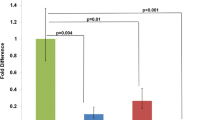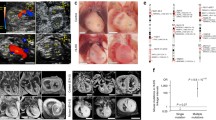Abstract
The Ts65Dn mouse is a well-studied model for Down syndrome (DS). The presence of the translocation chromosome T1716 (referred to as T65Dn) produces a trisomic dosage imbalance for over 100 genes on the distal region of mouse Chromosome 16. This dosage imbalance, with more than half of the orthologs of human Chromosome 21 (Hsa21), causes several phenotypes in the trisomic mice that are reminiscent of DS. Careful examination of neonates in a newly established Ts65Dn colony indicated high rates of postnatal lethality. Although the transmission rate for the T65Dn chromosome has been previously reported as 20%–40%, genotyping of all progeny indicates transmission at birth is near the 50% expected with Mendelian transmission and survival. Remarkably, in litters with maternal care that allowed survival of some pups, postnatal lethality occurred primarily in pups that inherited the T65Dn marker chromosome. This selective loss within 48 h of birth reduced the transmission of the marker chromosome from 49% at birth to 34% at weaning. Gross morphologic examination revealed cardiovascular anomalies, i.e., right aortic arch accompanied by septal defects, in 8.3% of the trisomic newborn cadavers examined. This is an intriguing finding because the orthologs of the DiGeorge region of HSA22, which are posited to contribute to the aortic arch abnormalities seen in trisomy 16 mice, are not triplicated in Ts65Dn mice. These new observations suggest that the Ts65Dn mouse models DS not only in its previously described phenotypes but also with elevated postnatal lethality and congenital heart malformations that may contribute to mortality.



Similar content being viewed by others
References
Barlow GM, Chen XN, Shi ZY, Lyons GE, Kurnit DM, et al. (2001) Down syndrome congenital heart disease: a narrowed region and a candidate gene. Genet Med 3, 91–101
Chaoui R, Heling KS, Sarioglu N, Schwabe M, Dankof A, et al. (2005) Aberrant right subclavian artery as a new cardiac sign in second- and third-trimester fetuses with Down syndrome. Am J. Obstet Gynecol 192, 257–263
Cohen WI (1999) Health Care Guidelines for Individuals with Down Syndrome: 1999 Revision. Down Syndrome Q 4, 1–16
Davisson MT, Schmidt C, Akeson EC (1990) Segmental trisomy of murine chromosome 16: a new model system for studying Down syndrome. Prog Clin Biol Res 360, 263–280
Davisson MT, Schmidt C, Reeves RH, Irving NG, Akeson EC, et al. (1993) Segmental trisomy as a mouse model for Down syndrome. Prog Clin Biol Res 384, 117–133
Dierssen M, Fillat C, Crnic L, Arbones M, Florez J, et al. (2001) Murine models for Down syndrome. Physiol Behav 73, 859–871
Freeman SB, Taft LF, Dooley KJ, Allran K, Sherman SL, et al. (1998) Population-based study of congenital heart defects in Down syndrome. Am J Med Genet 80, 213–217
Head E, Lott IT (2004) Down syndrome and beta-amyloid deposition. Curr Opin Neurol 17, 95–100
Korenberg JR, Chen XN, Schipper R, Sun Z, Gonsky R, et al. (1994) Down syndrome phenotypes: the consequences of chromosomal imbalance. Proc Natl Acad Sci U S A 91, 49970–45001
Liu DP, Schmidt C, Billings T, Davisson MT (2003) Quantitative PCR genotyping assay for the Ts65Dn mouse model of Down syndrome. Biotechniques 35, 1170–1178
McElhinney DB, Straka M, Goldmuntz E, Zackai EH (2002) Correlation between abnormal cardiac physical examination and echocardiographic findings in neonates with Down syndrome. Am J Med Genet 113, 238–241
Miyabara S, Gropp A, Winking H (1982) Trisomy 16 in the mouse fetus associated with generalized edema and cardiovascular and urinary tract anomalies. Teratology 25, 369–380
Moore CS, Lee JS, Birren B, Stetten G, Baxter LL, et al. (1999) Integration of cytogenetic with recombinational and physical maps of mouse chromosome 16. Genomics 59, 1–5
Morris JK, Wald NJ, Watt HC (1999) Fetal loss in Down syndrome pregnancies. Prenat Diagn 19, 142–145
Olson LE, Richtsmeier JT, Leszl J, Reeves RH (2004) A chromosome 21 critical region does not cause specific Down syndrome phenotypes. Science 306, 687–690
O’Doherty A, Ruf S, Mulligan C, Hildreth V, Errington ML, et al. (2005) An aneuploid mouse strain carrying human chromosome 21 with down syndrome phenotypes. Science 309, 2033–2037
Paz-Miguel JE, Pardo-Manuel de Villena F, Sanchez-Velasco P, Leyva-Cobian F (2001) H2-haplotype-dependent unequal transmission of the 17(16) translocation chromosome from Ts65Dn females. Mamm Genome 12, 83–85
Reeves RH, Irving NG, Moran TH, Wohn A, Kitt C, et al. (1995) A mouse model for Down syndrome exhibits learning and behaviour deficits. Nat Genet 11, 177–184
Roper RJ, St. John HK, Philip J, Lawler A, Reeves RH (2006) Perinatal loss of Ts65Dn “Down syndrome” mice. Genetics 172, 437–443
Sago H, Carlson EJ, Smith DJ, Kilbridge J, Rubin EM, et al. (1998) Ts1Cje, a partial trisomy 16 mouse model for Down syndrome, exhibits learning and behavioral abnormalities. Proc Natl Acad Sci U S A 95, 6256–6261
Sago H, Carlson EJ, Smith DJ, Rubin EM, Crnic LS, et al. (2000) Genetic dissection of region associated with behavioral abnormalities in mouse models for Down syndrome. Pediatr Res 48, 606–613
Shinohara T, Tomizuka K, Miyabara S, Takehara S, Kazuki Y, et al. (2001) Mice containing a human chromosome 21 model behavioral impairment and cardiac anomalies of Down’s syndrome. Hum Mol Genet 10, 1163–1175
Spahis JK, Wilson GN (1999) Down syndrome: perinatal complications and counseling experiences in 216 patients. Am J Med Genet 89, 96–99
Smith A, McKay R (2003) A practical atlas of congenital heart disease (London: Springer-Verlag)
Thase ME, (1982) Longevity and mortality in Down’s syndrome. J Ment Defic Res 26, 177–192
Waller BR 3rd, McQuinn T, Phelps AL, Markwald RR, Lo CW, et al. (2000) Conotruncal anomalies in the trisomy 16 mouse: an immunohistochemical analysis with emphasis on the involvement of the neural crest. Anat Rec 260, 279–293
Webb S, Brown NA, Anderson RH (1997) Cardiac morphology at late fetal stages in the mouse with trisomy 16: consequences for formation of the atrioventricular junction when compared to humans with trisomy 21. Cardiovasc Res 34, 515–524
Wessels MW, Los FJ, Frohn-Mulder IM, Niermeijer MF, Willems PJ, et al. (2003) Poor outcome in Down syndrome fetuses with cardiac anomalies or growth retardation. Am J Med Genet A 116, 147–151
Yang Q, Rasmussen SA, Friedman JM (2002) Mortality associated with Down’s syndrome in the USA from 1983 to 1997: a population-based study. Lancet 359, 1019–1025
Acknowledgments
This research was supported by funding from Franklin & Marshall College.
Author information
Authors and Affiliations
Corresponding author
Rights and permissions
About this article
Cite this article
Moore, C.S. Postnatal lethality and cardiac anomalies in the Ts65Dn Down Syndrome mouse model. Mamm Genome 17, 1005–1012 (2006). https://doi.org/10.1007/s00335-006-0032-8
Received:
Accepted:
Published:
Issue Date:
DOI: https://doi.org/10.1007/s00335-006-0032-8




